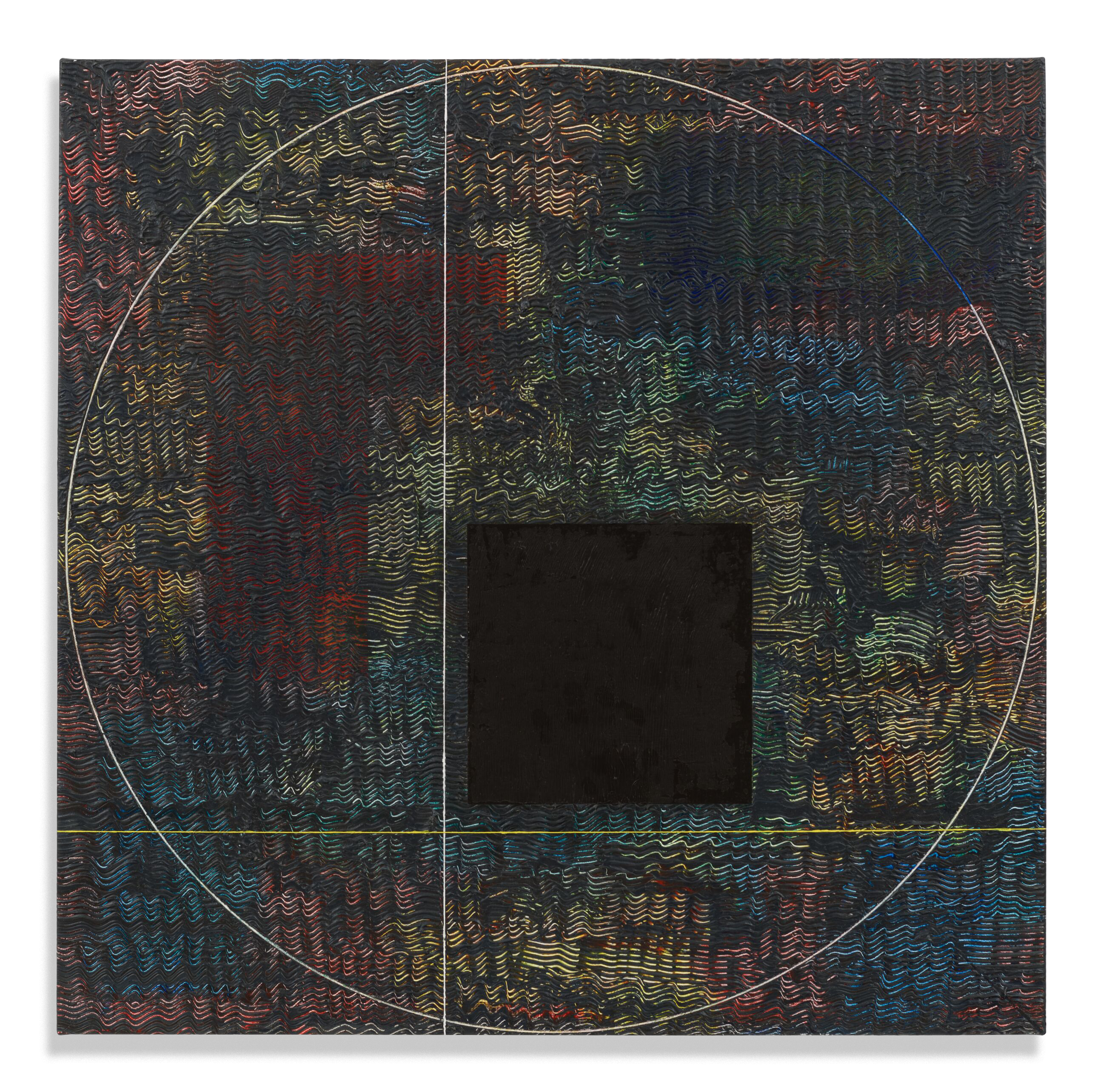Jack Whitten
Psychic Intersection III
Psychic Intersection III
Price available upon request
1980
Acrylic on canvas with string
106.7 x 106.7 cm / 42 x 42 in
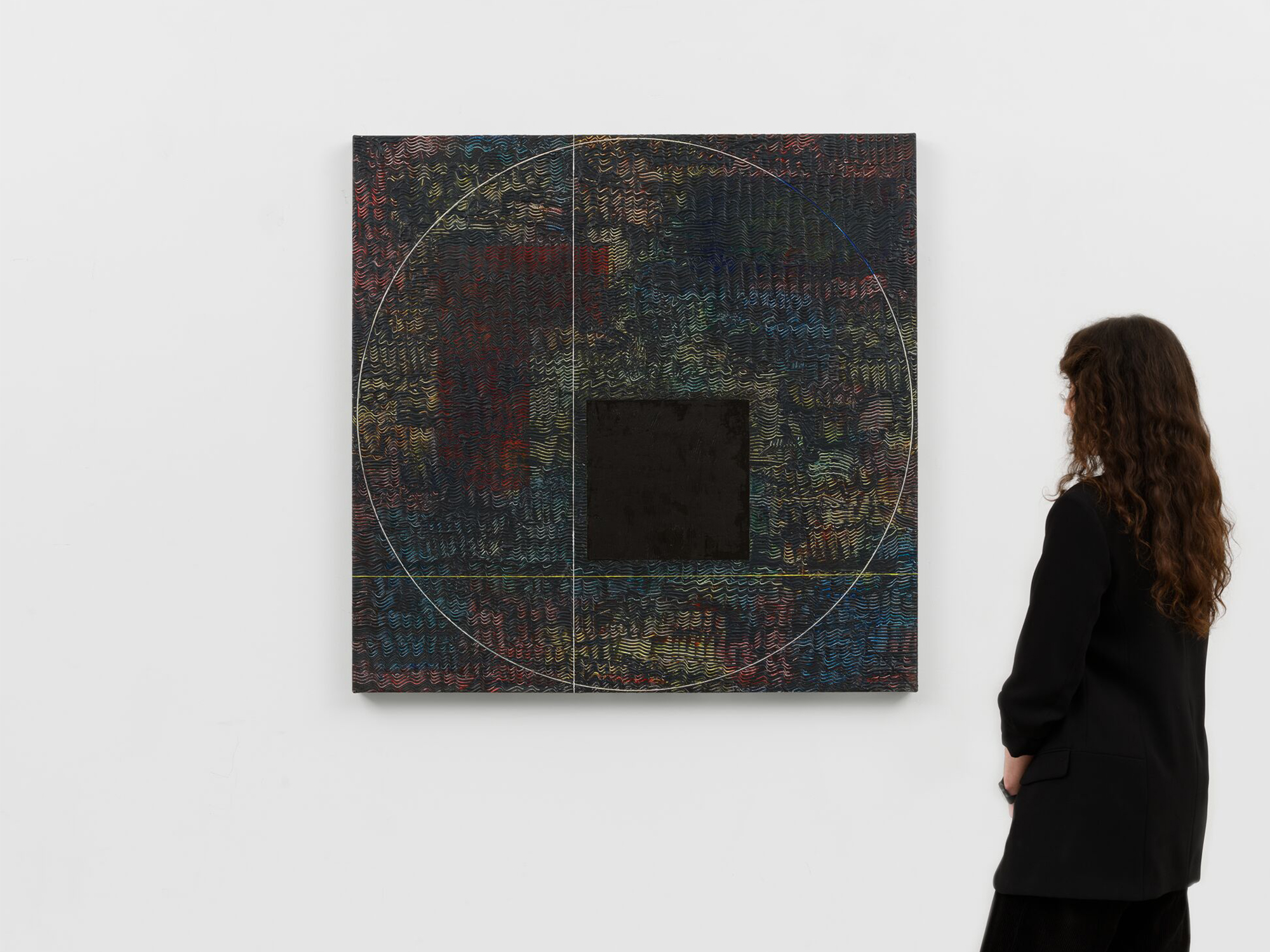
‘Psychic Intersection III’ (1980) represents a high point in Jack Whitten’s development of his unique visual language. Created during a pivotal moment in the artist’s career, the extraordinary painting belongs to a small yet important series of paintings, which build on several of the innovations Whitten initially explored in his renowned ‘Greek Alphabet’ paintings (1975 – 1978). The first painting in the series, ‘Psychic Intersection’ (1979 – 1980), is in the collection of The Studio Museum in Harlem.
‘I often given the title: Psychic system to what I am doing. A system for representing psychic-phenomenon or Psychic Realism: That which lives only in the brain, those things which one thinks they see. I also think that this solves the problem of content in abstract painting. Content is what you think you see but really there is nothing there but paint and material used. Bill de Kooning said
‘“content is a glimpse’” he was very close.’—Jack Whitten [1]
‘“content is a glimpse’” he was very close.’—Jack Whitten [1]
‘Psychic Intersection III’ exemplifies Whitten’s profound originality and unrivaled ability to combine cross-cultural sources of inspiration, including African sculpture, European modernism, and abstract expressionism. After Whitten left his deeply segregated hometown in Alabama, he became entrenched in the New York art world and moved freely between artistic circles that included Willem de Kooning, Franz Kline, Romare Bearden, and Norman Lewis. This network of mentors and friends bolstered his motivation to radically embrace abstraction. The culmination of over a decade of experimentation, ‘Psychic Intersection III’ showcases several of Whitten’s most important innovations.
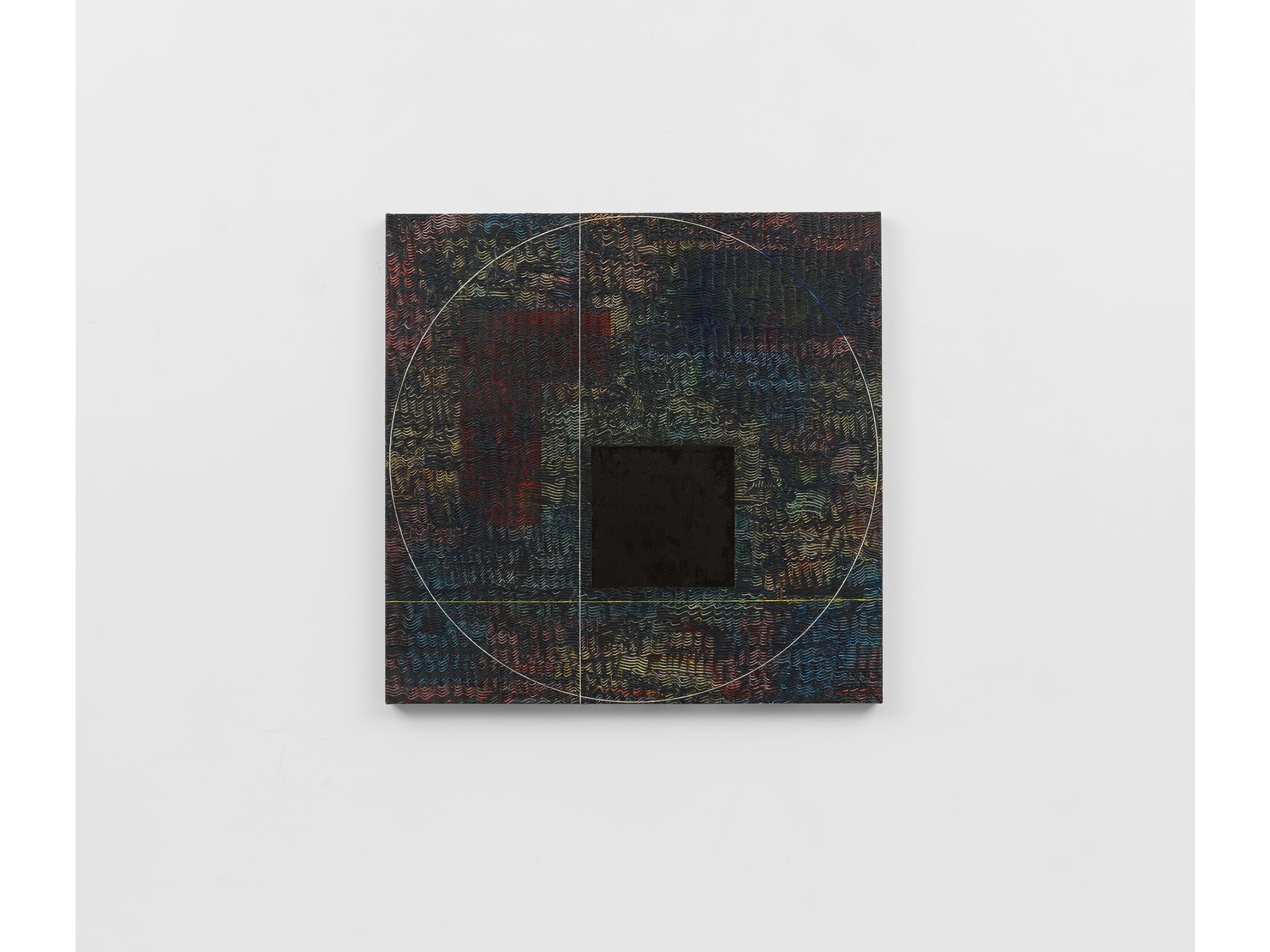
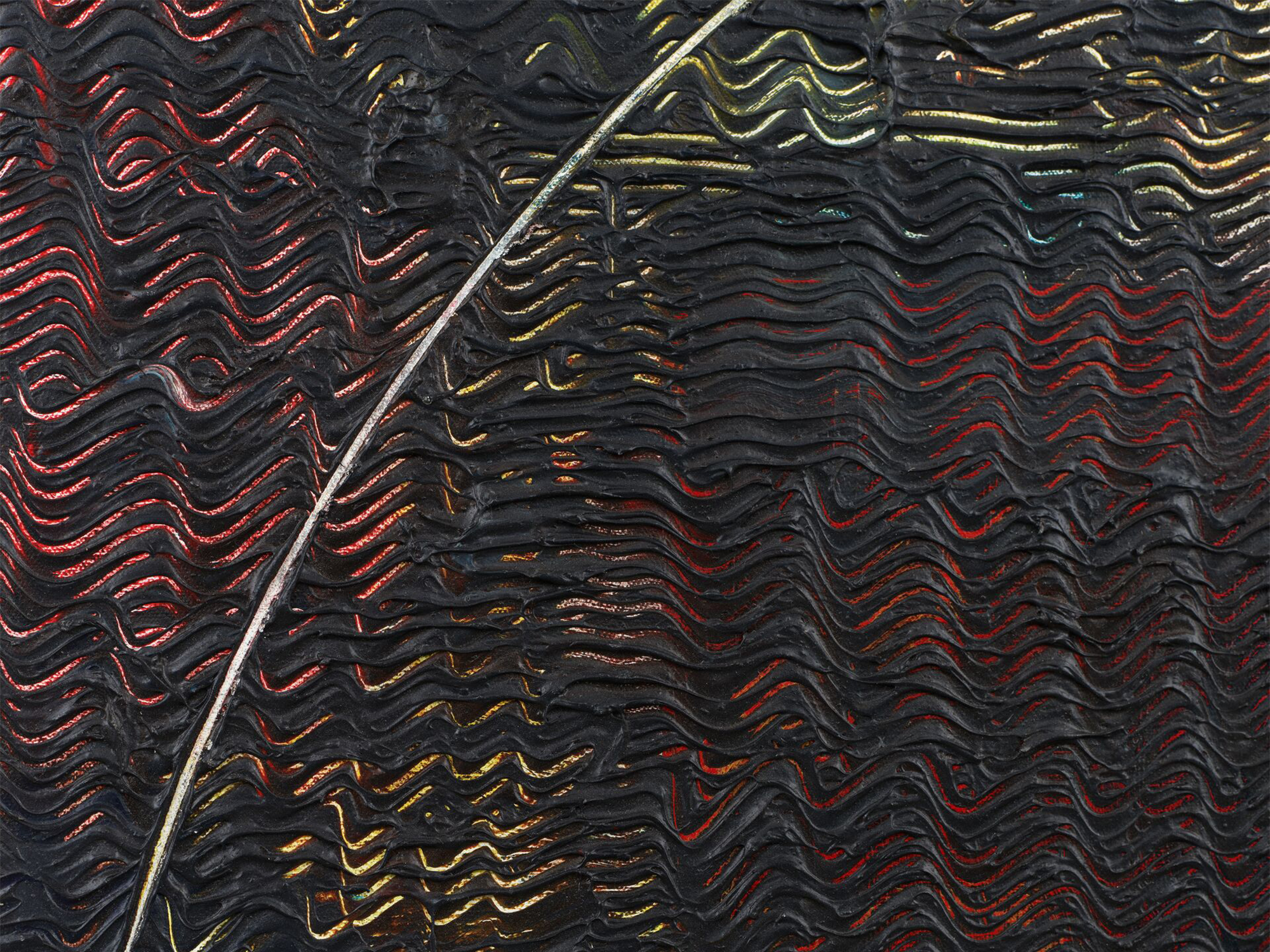
Throughout his career, Whitten explored the creative potential of acrylic paint through innovative application techniques that transformed the terrain of his painted surfaces. After spending much of the 1970s exploring the textures and shapes he could create by raking tools across large-scale canvases laid down on his studio floor, Whitten began to adhere or imprint patterns into his impasto surfaces. The large white circle that spans ‘Psychic Intersection III’ consists of a shallow groove traversing the layers of paint, while the striking white and yellow lines are made up of pieces of string covered with acrylic paint.
Concurrent to his material innovations, Whitten also started experimenting with different tools to create his paintings. For ‘Psychic Intersection III,’, Whitten pulled an afro comb across his canvas to produce the wave-like pattern that reveals colorful layers below. The organic forms animate the composition and provide a contrast to the various geometric shapes, including the central black square reminiscent of Kazimir Malevich’s iconic work. Whitten noted that Malevich’s square had emboldened him to uncover the roots of geometric abstraction in African art, particularly the geometrical figures typical of African wood carvings. [2]
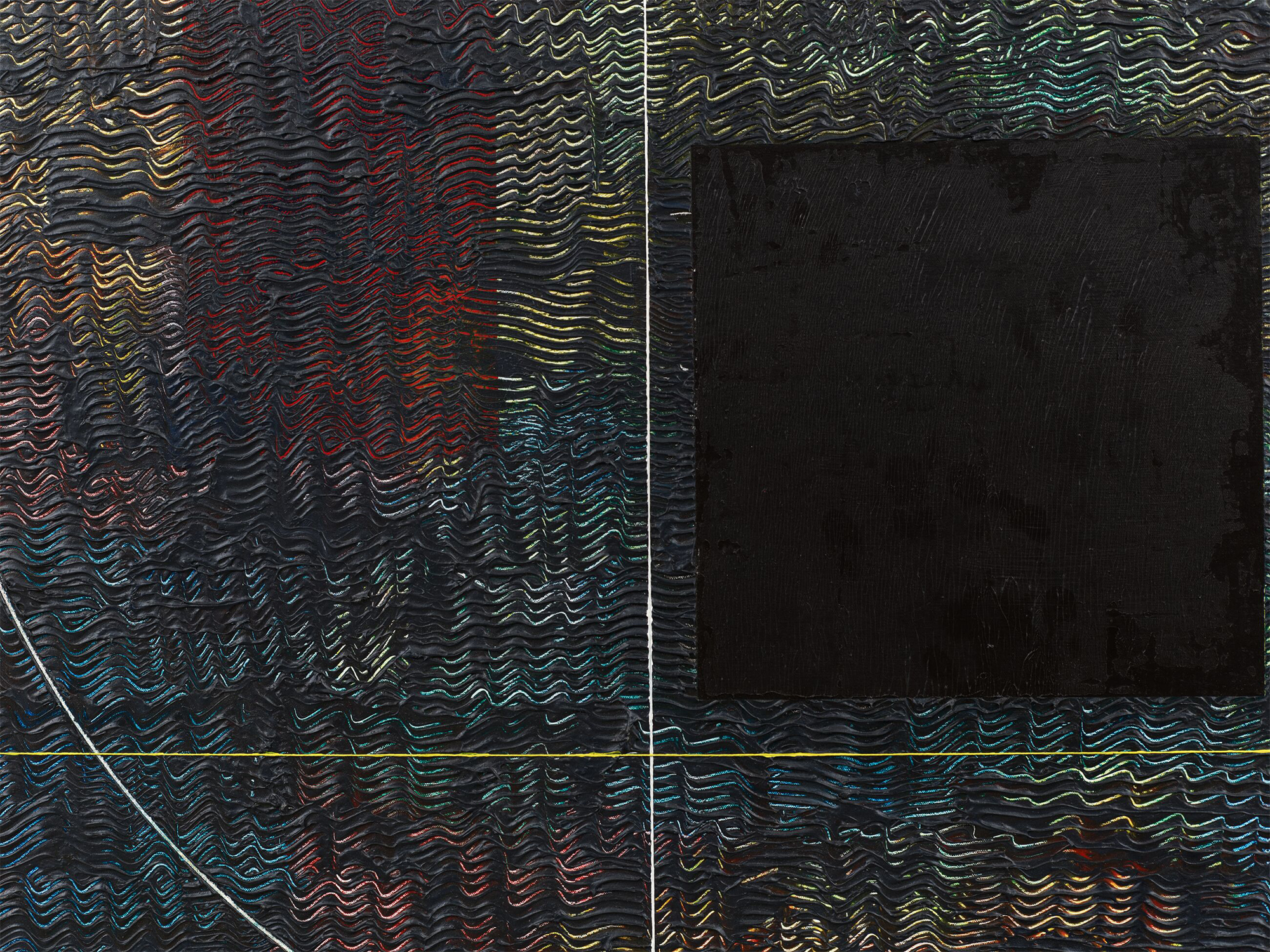
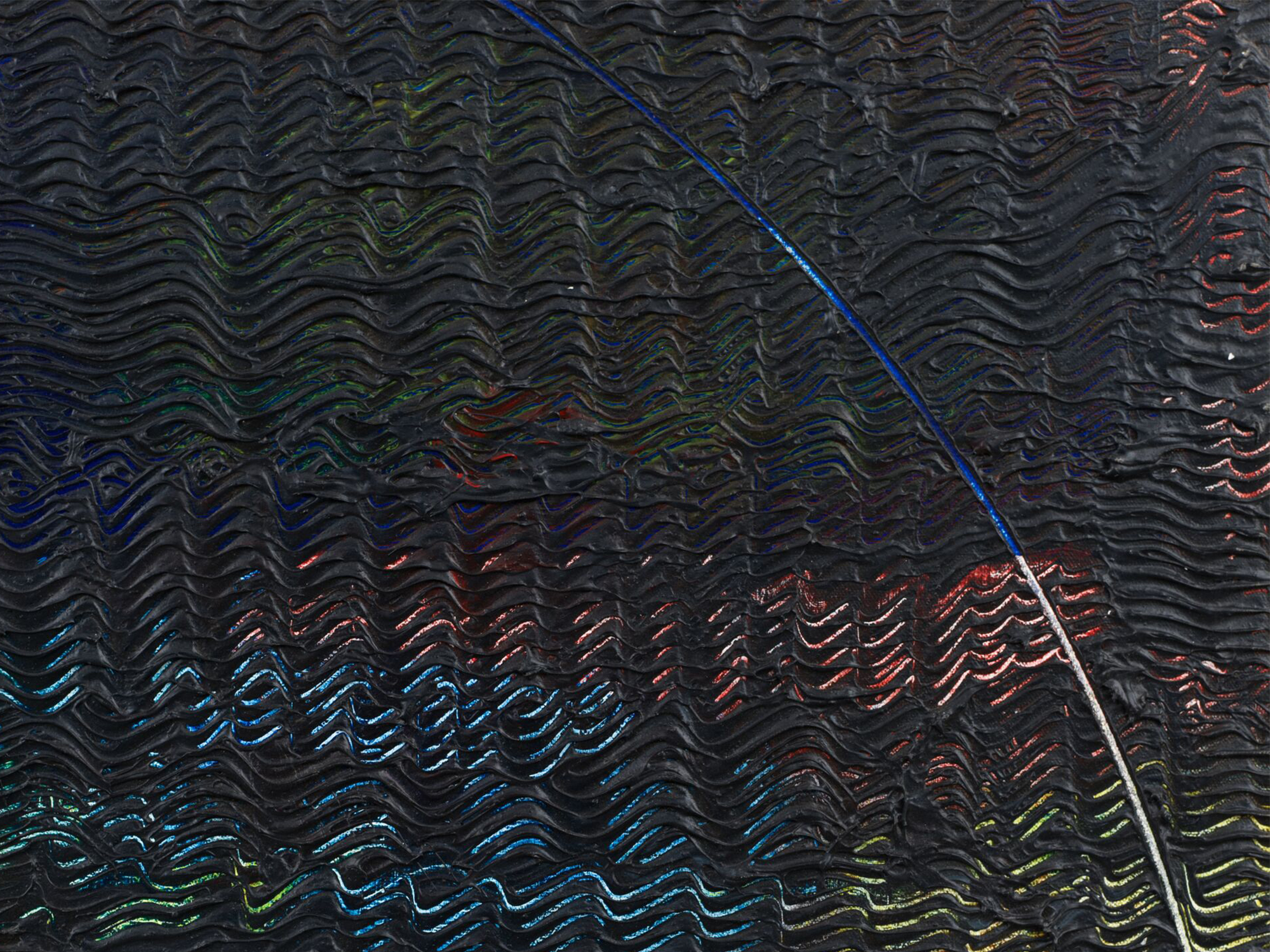
Summarizing the importance of works such as ‘Psychic Intersection III,’ renowned curator Henry Geldzahler wrote: ‘I would divide the decade into two parts: the 1970-1975 abstractions in which the prime concern is paint itself, inspired execution searching for its own parameters; and the paintings from 1975-80, when geometry introduces a new sense of fascination with controlled drawing on the surface of the canvas. In Whitten’s very best pictures bisection lines and circles are incised directly on the surface. In the artist’s own mind, this geometry has always underlain the work.’ [3]
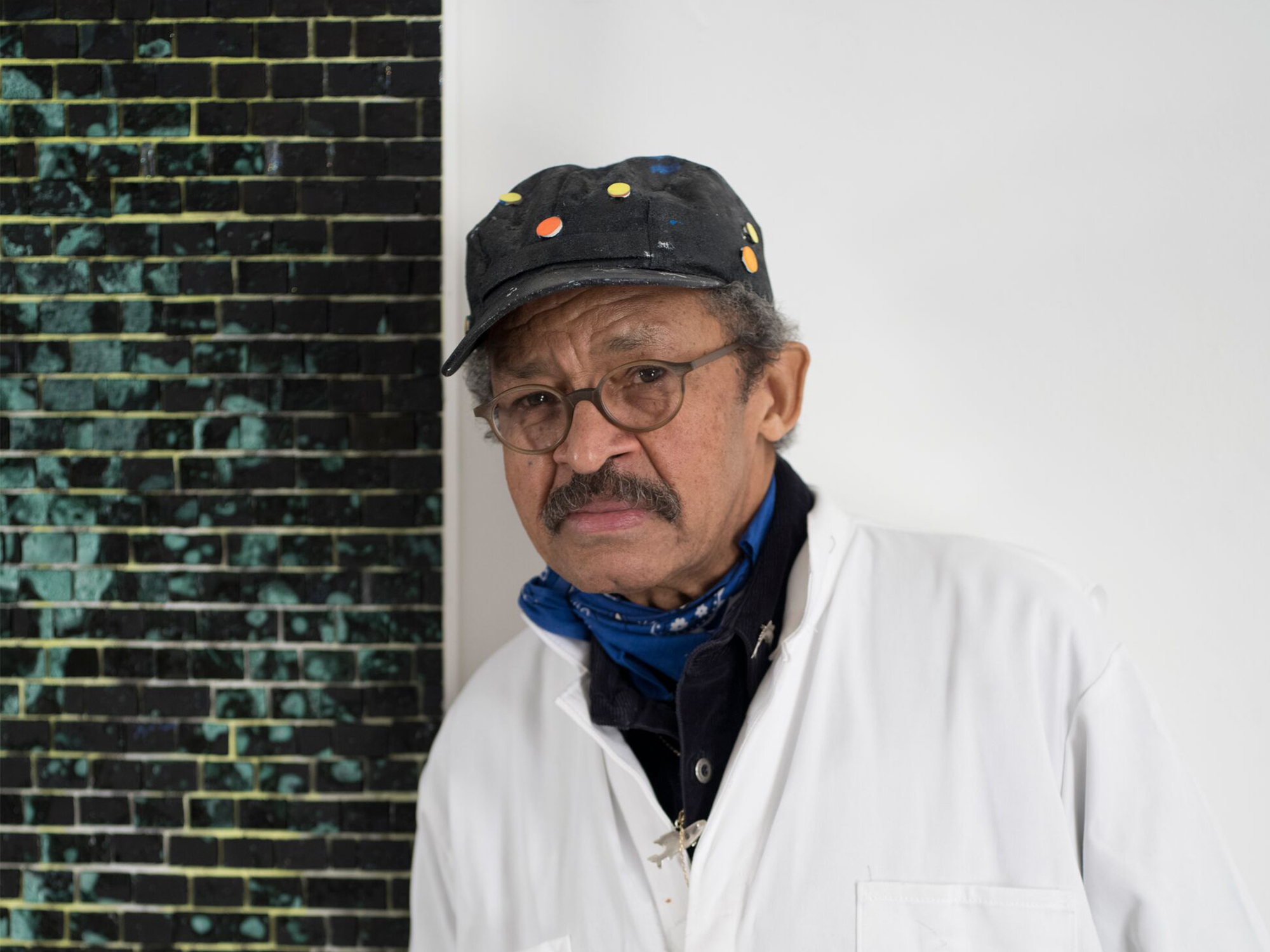
About the artist
 Born in Bessemer, Alabama in 1939, Jack Whitten is celebrated for his innovative processes of applying paint to the surface of his canvases and transfiguring their material terrains. Although Whitten initially aligned with the New York circle of abstract expressionists active in the 1960s, his work gradually distanced from the movement’s aesthetic philosophy and formal concerns, focusing more intensely on the experimental aspects of process and technique that came to define his practice.
Born in Bessemer, Alabama in 1939, Jack Whitten is celebrated for his innovative processes of applying paint to the surface of his canvases and transfiguring their material terrains. Although Whitten initially aligned with the New York circle of abstract expressionists active in the 1960s, his work gradually distanced from the movement’s aesthetic philosophy and formal concerns, focusing more intensely on the experimental aspects of process and technique that came to define his practice.
All artwork images © Jack Whitten Estate. Photo: Sarah Muehlbauer
1.) Jack Whitten quoted in Katy Siegel (ed.), ‘Jack Whitten. Notes from the Woodshed,’ Zurich: Hauser & Wirth Publishers, 2018, p. 119.
2.) Jack Whitten quoted in Katy Siegel (ed.), ‘Jack Whitten. Notes from the Woodshed,’ Zurich: Hauser & Wirth Publishers, 2018, p. 368.
3.) Henry Geldzahler, ‘Jack Whitten. Ten Years, 1970-1980,’ New York: The Studio Museum in Harlem, 1983, p. 8.



